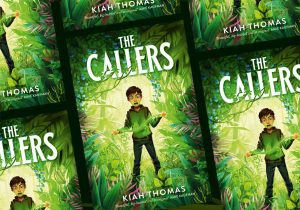
Animal language primary resource
Discover how gibbons use different sounding calls to mean different things
This primary resource introduces children to the concept of language among other species; in this case, the gibbon. Discover how gibbons use different sounding calls to mean different things. How do gibbons use the volume of their voices to communicate different meanings? What is a gibbon ‘duet’? What does a gibbon say when it sees danger?
Pupils will learn about how gibbons use communication as the key to their survival — and make friends — in our National Geographic Kids’ English primary resource sheet.
This primary resource can also be used to reinforce recognition of short and long vowels such as ‘oo’, which is a requirement of phase 3 phonics teaching in English; or to think about alternative pronunciation of letters such as ‘a’, ‘o’ and ‘oo’ — as required in phase 5 phonics learning. The ‘learn to speak gibbon’ exercise allows children the opportunity to practise the skills of blending and segmenting letter sounds, which can then be applied to words they see in English.
The teaching resource can be used in study group tasks for thinking about (and comparing) human and animal communication, as a printed handout for each pupil to review and annotate, or for display on the interactive whiteboard using the information and images included in the resource for class discussion.
Activity: As a whole class, in small groups or as individuals, complete the ‘Learn to speak gibbon’ exercise. Ask pupils to draw up a table, with one column for humans, and one column for gibbons, and compare methods of communication. They could divide the table into rows such as: body language, tone of voice, gestures, etc. Pupils could discuss whether we can ever really know what gibbons are saying to each other. Give reasons for their answers. They could use different coloured highlighter pens to highlight the information they believe to be proven fact, and that which they believe to be speculation or opinion.
N.B. The following information for mapping the resource documents to the school curriculum is specifically tailored to the English National Curriculum and Scottish Curriculum for Excellence. We are currently working to bring specifically tailored curriculum resource links for our other territories; including South Africa, Australia and New Zealand. If you have any queries about our upcoming curriculum resource links, please email: schools@ngkids.co.uk
This English primary resource assists with teaching the following Key Stage 1 English (Year 1) objectives from the National Curriculum:
Pupils should be taught to:
- use spoken language to develop understanding through speculating, hypothesising, imagining and exploring ideas
- develop pleasure in reading, motivation to read, vocabulary and understanding by: being encouraged to link what they read or hear read to their own experiences
National Curriculum Lower Key Stage 2 English (Year 3 & 4) objective:
- Pupils should be taught to: participate in discussion about both books that are read to them and those they can read for themselves, taking turns and listening to what others say.
National Curriculum Upper Key Stage 2 English (Year 5 & 6) objective:
- Pupils should be taught to: retrieve, record and present information from non-fiction
This English primary resource assists with teaching the following Literacy and English Early level objectives from the Scottish Curriculum for Excellence:
- Within real and imaginary situations, I share experiences and feelings, ideas and information in a way that communicates my message.
Scottish Curriculum for Excellence First level Literacy and English objectives:
- I am exploring how pace, gesture, expression, emphasis and choice of words are used to engage others, and I can use what I learn.
- To help me develop an informed view, I am learning to recognise the difference between fact and opinion.
Scottish Curriculum for Excellence Second level Literacy and English objectives:
- I can recognise how the features of spoken language can help in communication, and I can use what I learn.
- I can recognise different features of my own and others’ spoken language.
- To help me develop an informed view, I can distinguish fact from opinion, and I am learning to recognise when my sources try to influence me and how useful these are.
Download primary resource
More Like

Ferdinand: the love-a-bull family movie packed with fun!

Waiting for the Storks

Earth Day!









LEAVE A COMMENT
THANK YOU
Your comment will be checked and approved shortly.
WELL DONE,
YOUR COMMENT
HAS BEEN ADDED!
COMMENTS
CUSTOMIZE YOUR AVATAR